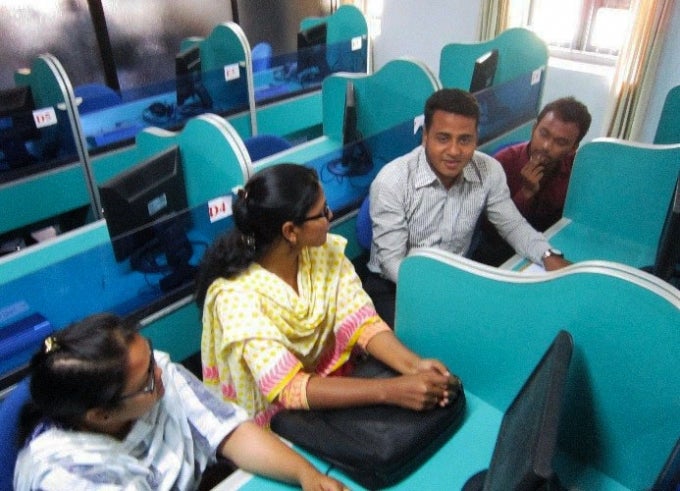
A couple of months ago, I visited a few tertiary colleges affiliated with the National University in Bangladesh while preparing the College Education Development Project which aims to strengthen the strategic planning and management capacity of the college subsector and improve the teaching and learning environment of colleges. Almost two-thirds of all tertiary students in Bangladesh are enrolled in these colleges, making them the largest provider of higher education in the country.
World Bank report on education in Bangladesh
A recent World Bank report estimates that around 1.6 million tertiary students in Bangladesh are enrolled in around 1,700 government and non-government colleges affiliated under the National University. This piece of information underpins a huge economic opportunity in context with Bangladesh’s quest to become a middle-income country over the next few years. There is a strong demand for graduates with higher cognitive and non-cognitive skills and job-specific technical skills in the country. This requires an improvement in the quality and relevance of tertiary education to ensure graduates have more market relevant skills. The National University student enrolment size combined with its sheer number of colleges network all over the country make it the critical subsector for making a qualitative dent in the higher education system.
A contrast of college systems
During the visits, I noted a significant contrast between the National University affiliated government and non-government colleges. They varied in components including size, student enrolment and programs offered. On entering the gates of Titumir College, a government college located in the heart of Dhaka, I was stunned by the wave of students swarming across the large campus. While Sachindro College, a non-government college a few kilometers out of the small town of Habigani in Sylhet had fewer students. Titumir college compared favorably with any large public university with over 50,000 students enrolled across a range of programs in science, humanities and business. Sachindro on the other hand enrolled around 5,000 students offering limited programs mostly in humanities and business.
At every college, I had the opportunity to speak with the management and students to understand the pros and cons of everyday college life. On the good side, students shared how local tertiary colleges made higher education accessible for them without the need for relocation, especially when universities have limited seats and are located mostly in metropolitan cities. Students shared their hopes and aspirations for receiving a quality education and joining the job market as skilled professionals. “On completing my program, I plan to join public service and serve this country. As a profession, government teaching jobs are well-reputed with good career progress”, shared Shakil, an English literature major, at Sylhet MC College.

Government of Bangladesh – World Bank College Education Development Project
To tackle these challenges, the Government of Bangladesh with support from the World Bank has recently developed the College Education Development Project which was approved by the Board on June 3, 2016. This $130 million (IDA US$100 million and GoB US$30 million) investment will focus on overhauling the National University college sector over the next five years. The Project aims to improve the planning and management of the overall college subsector as well as enhance quality and relevance of college education. Through activities such as institutional development grants and teachers’ professional development program, the Project aspires to provide students like Shakil with an improved teaching/ learning environment for better learning outcomes. The Project will also facilitate the development of the first Strategic Plan for the college subsector in providing direction and guidance to policymakers and the college community in achieving quality education outcomes relevant to the needs of the country in the years ahead.
Concerted efforts to revamp the college subsector for high quality education has been much anticipated among the college community. Any investment in education creates opportunities for better graduates, improved jobs and stronger economy.


Join the Conversation